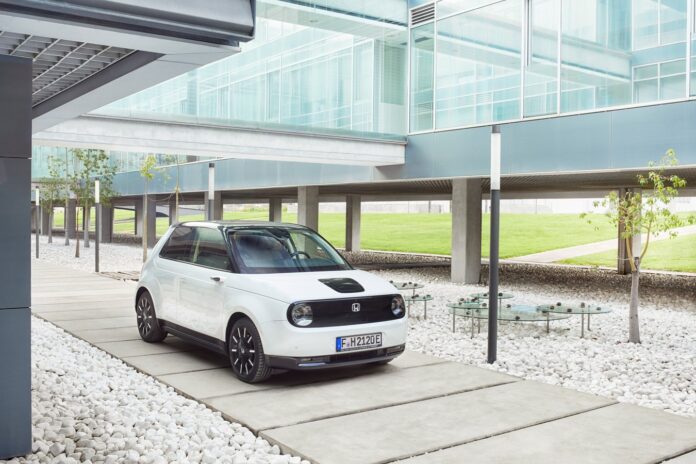14/12/2020 The Honda-e is an outrageously cute electric car that represents the very best in a new trend for ‘urban EVs’ – that’s just a nice way of saying it can’t go very far from a full charge – 222km maximum – in ideal conditions.

The Honda-e is a four-seat hatchback with compact proportions, similar in size to a Honda Jazz. Pricing starts at €29,995, rising to €33,995 for the ‘Advance’ model, so it is clearly pitched at premium car buyers and well-heeled urban users. According to Honda research, urban drivers cover less than 40km per day. With electric cars you need space to store a battery pack. The Honda-e’s compact design is proof you can only fit so many batteries under the floor, and until the much more compact ‘solid state’ batteries come along (at an affordable price), car makers will struggle to deliver long driving range in small cars. As a general rule the bigger the battery pack the further the electric car can go. That said the Honda-e stacks up poorly for driving range against mainstream small EVs like the Peugeot e-208 & its sister car the Opel Corsa-e (340km/50kWh battery) and the Renault Zoe with its 52kWh battery that has a maximum range of 395km. All are similar in size and cheaper. The MINI Electric is Honda-e’s natural premium EV rival and it has a similar small range.
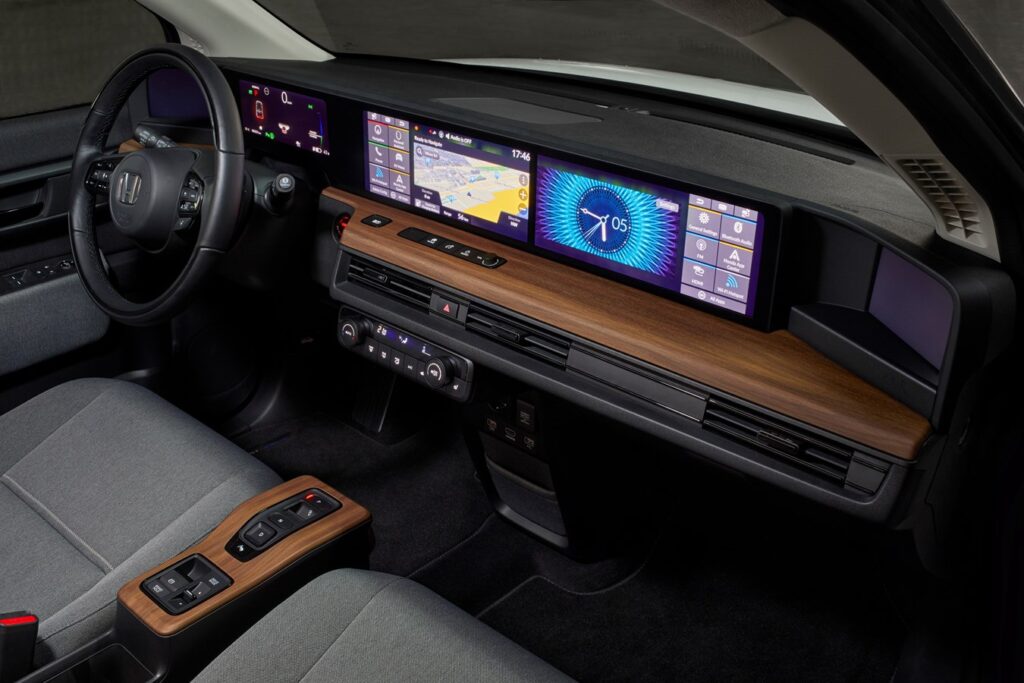
Sod the range – just look at those eyes, sorry headlights (12 LEDs per ring) and its rounded, disarming styling (I’m now making sounds usually reserved for talking to puppies). Every time you take to to the road be prepared for other road users ‘gawking’ at you. If I had a euro for every slow overtake, needless tailing or smiles of approval I got behind the wheel – I’d be rich! Everyone bar none who sees a Honda-e ends up smitten by its looks.
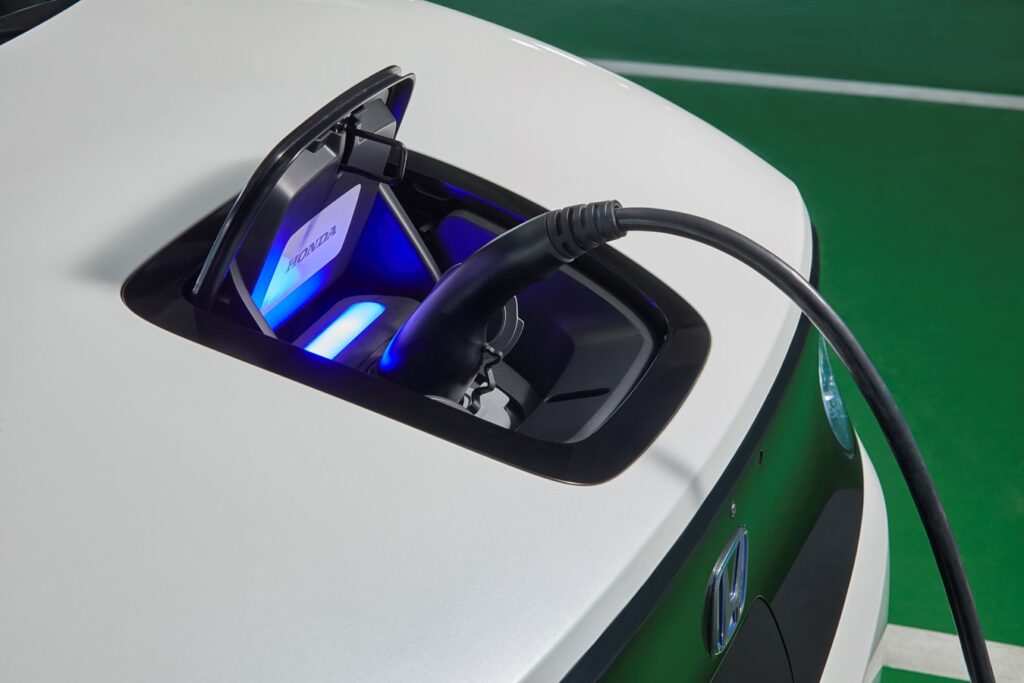
Once you get in using the cool pop-out door handles, the cabin features some very impressive technology. Big display screens cover the entire width of the dash. On the outer most edges are two TV screens that display the view from the side cameras – yes cameras not mirrors – Honda calls it a side camera monitoring system. The driver gets a display behind the steering wheel with the usual selectable stuff on it, while the centre of the dash houses a touchscreen display and there is a matching touchscreen display in front of the passenger. Both displays can feature a myriad of different views. You can display movies (the ‘Advance model has a brilliant sound system), you can display your own downloaded screensavers or even display a lifelike fish tank with moving and customisable fish! Voice activation features via the voice prompt “OK Honda”. The rear view mirror is a mirror… but also a TV display of the rear pointing camera. The Honda-e is connected and gets all the usual kit like CarPlay etc. Honda Parking Pilot (auto-parking) features but in truth if you can’t manoeuvre this nimble machine you should hand in your driving license. LED headlights and lots of premium features are standard. On the safety side Honda Sensing (its comprehensive safety pack) is present and includes the latest ADAS systems to help avoid collisions.
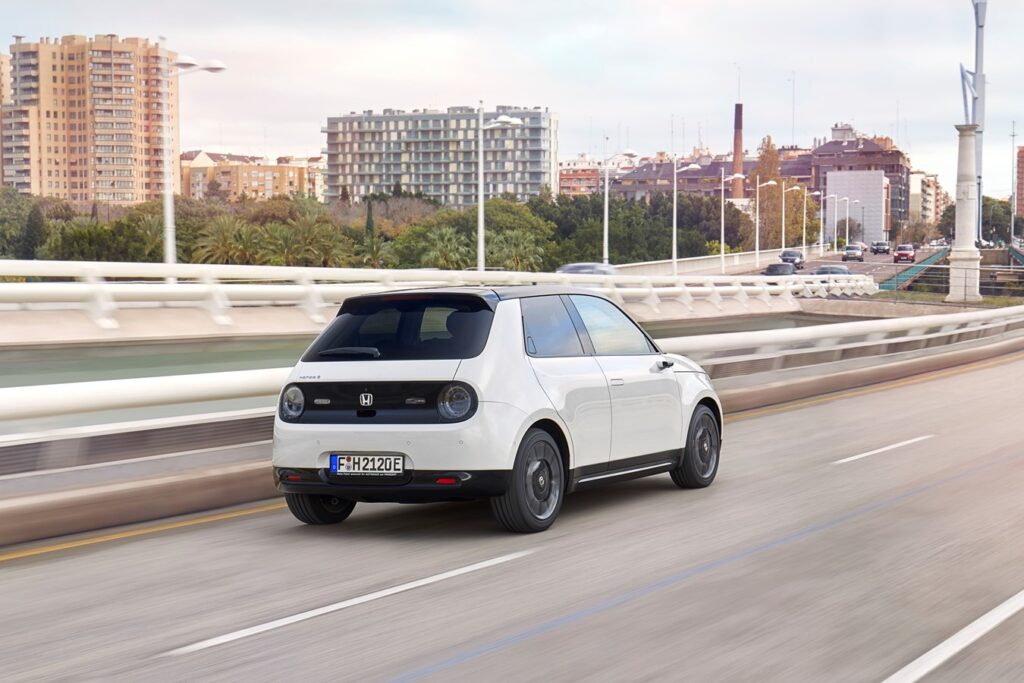
The cabin offers good room up front but in the rear it is pretty cramped, and is best used for kids or people you don’t like. There are lots of cable connection points (including a HDMI) and clear and simple heating controls with four vents. Pouches, cubbies and a cupholders all deliver a modern yet retro feel to the cabin. The Honda-e is fun and a little cheeky – and that is so refreshing. The boot is tiny at 171 litres (I’ve seen bigger glove boxes – eh, not really) but when you need more space – as I did for three bags of coal, a quick pull on the centre seat-back lever and the rear seats popped down making loads of space (861 litres).
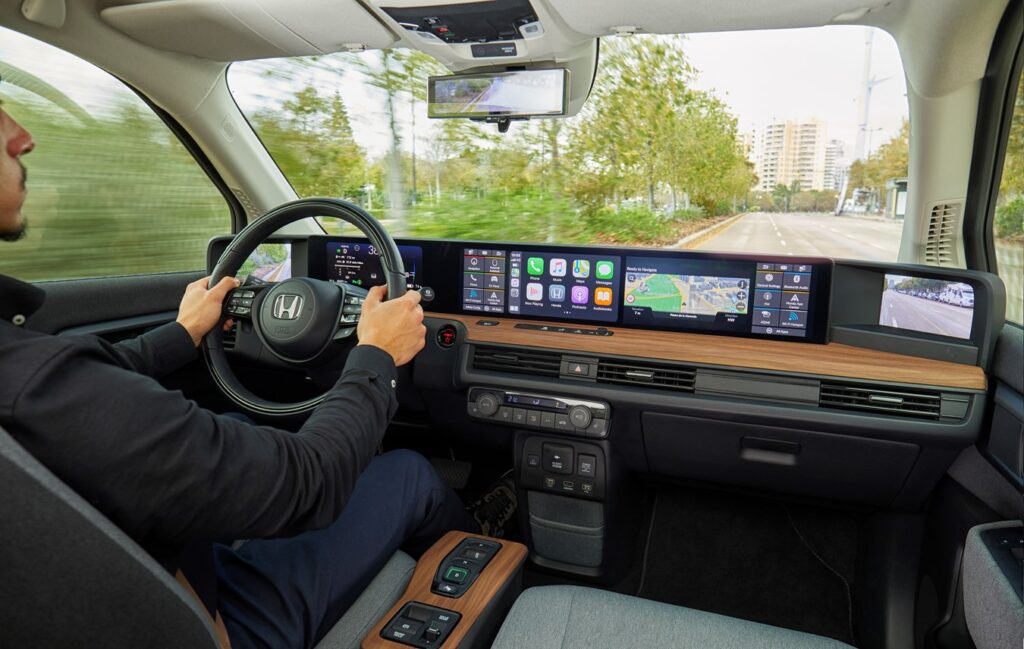
Under the floor is a rechargeable 35.5kWh lithium-ion battery pack that in turn powers its electric motor. The rear mounted DC motor pushes out a healthy 136hp (standard) or a very nippy 154hp in ‘Advance’ grade. A CCS charging connector (AC & DC) sits underneath the car’s bonnet-mounted charge port. The Honda-e comes with a 6.6kW AC on board charger. It can charge at a home charger from zero to full in 4.1 hours. Charging to 80 per cent takes 30 minutes at a 100kW CCS rapid charger. Active thermal management is used to cool the lithium-ion battery. Honda e has the ability to heat or cool the battery relative to the ambient temperature to prolong its life. Active cooling allows more frequent rapid DC charging.
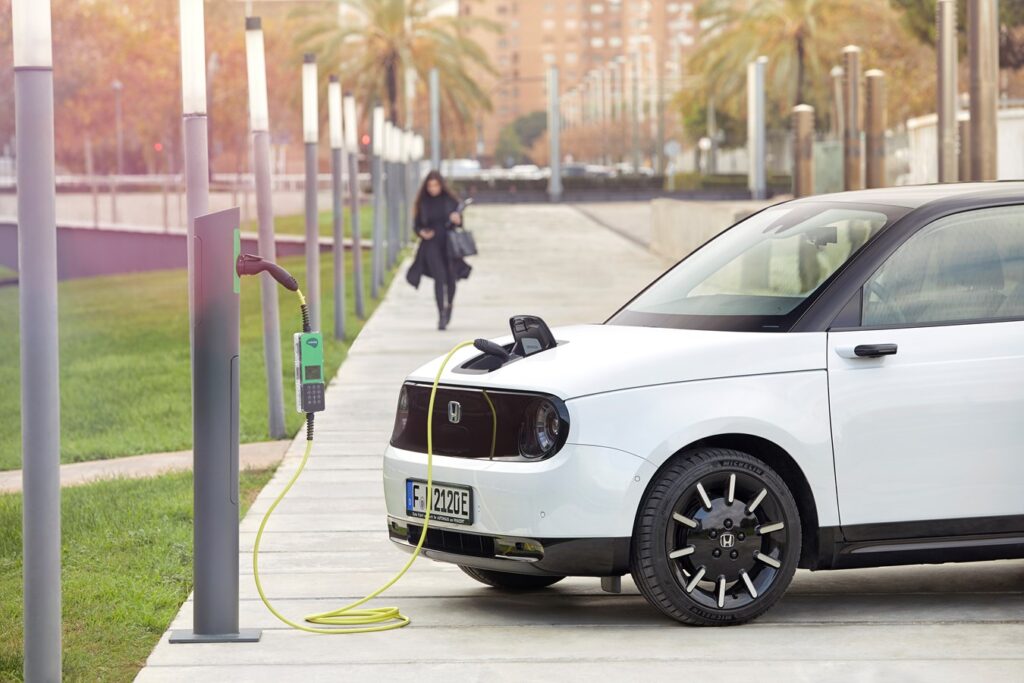
On the road the little Honda has near perfect 50/50 weight distribution with a low centre of gravity (500mm above the road). Speaking of weight – we all know EVs are heavy things due to their battery packs but at 1,514kgs the ‘e’ isn’t too flabby next to other electric cars. Its suspension is more sophisticated than other small cars too with fully independent McPherson strut suspension front and rear. The Honda-e’s electric motor powers the rear wheels from 0-100km/h in as little as 8.3 seconds (9” standard guise). When you select ‘D’ and press on the automatic’s accelerator you get a lovely push in the back (both versions have 315nm) as the car leaps forward. Pop it from ‘normal’ to ‘sport’ driving mode and you’ll really have a giggle. Sadly like all EVs the Honda-e runs out of eagerness the faster you go. Top speed a not very track day friendly 145km/h.
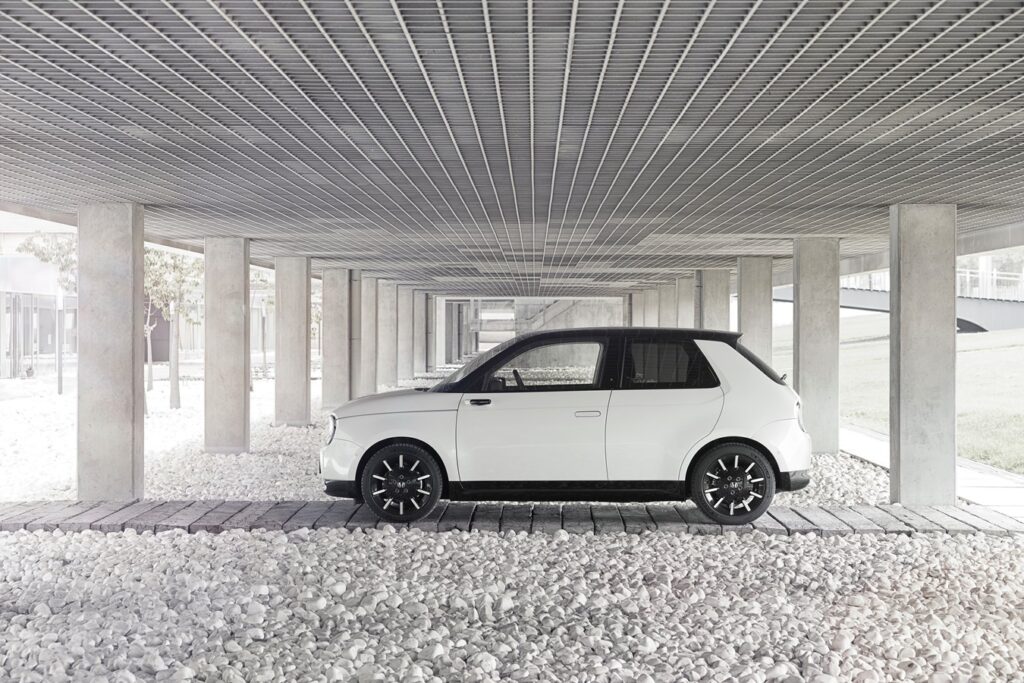
Rear wheel drive cars can be less than impressive in the wet – what is the ‘e’ like for grip? If you try to upset it on greasy roads the back will step out a little before being brought back by the car’s electronic driving aids. Overall the car feels planted. The RWD configuration frees up more space for the front wheels to steer and when I say the Honda-e can turn on a sixpence – I mean it. The Honda-e has variable geared steering and delivers wheel movement within the front arches of up to 50 degrees. On a normal road it can do a U-Turn (4.6 metre radius) where other cars would need to do a three point turn at least. It can turn about in just – metres and takes just 3.1 turns of the steering wheel to go from lock to lock. Like the Nissan Leaf you can press a button to activate one pedal driving. There are three preset degrees of regenerative braking force selectable via the steering wheel paddle shifters.
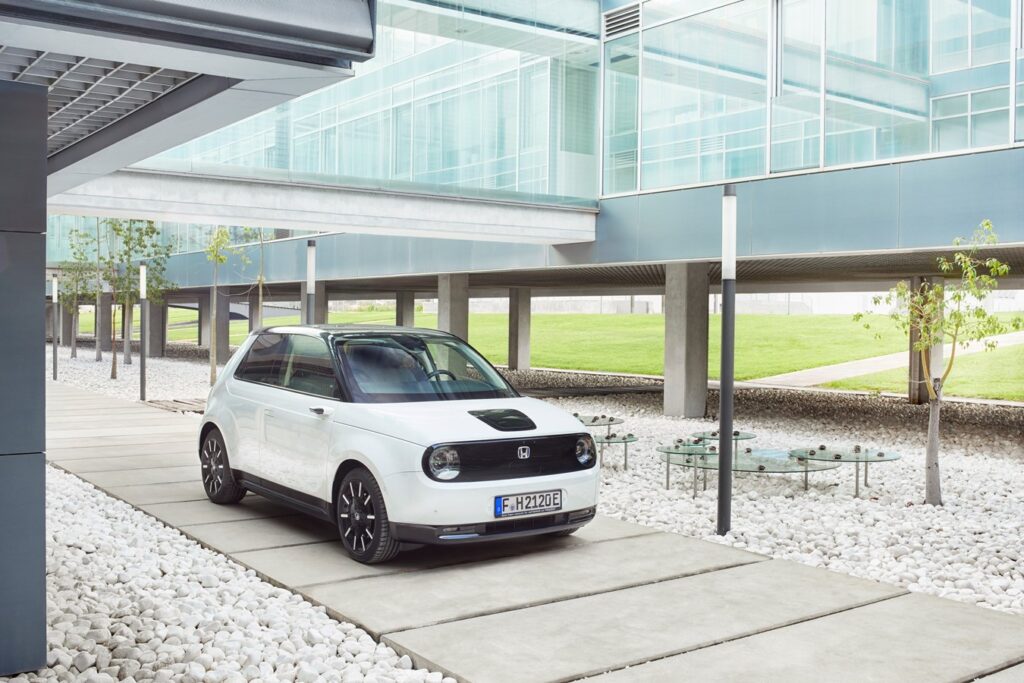
The Honda-e is a brilliant, adorable and flawed. Sadly it doesn’t fit my lifestyle and this brakes my heart. Its real world range is significantly less than 220km – from a full charge, I drove 5km and the battery display said I lost 5% of the battery. During testing we found the Honda-e to be great fun but also thirsty on electricity – even when we tried ahard to be economical. The e’s fuel consumption averaged in the mid ’20s’ kW per 100km and if you use regular consumers like heating etc. without special EV driving consideration the range can be worse and really restricting. The Honda-e is definitely for low mileage user and is in no way the EV for countryside living. If you are an urban or low mileage commuter – you should form an orderly queue, by orderly, I mean – RUN! to your Honda dealer. Michael Sheridan


